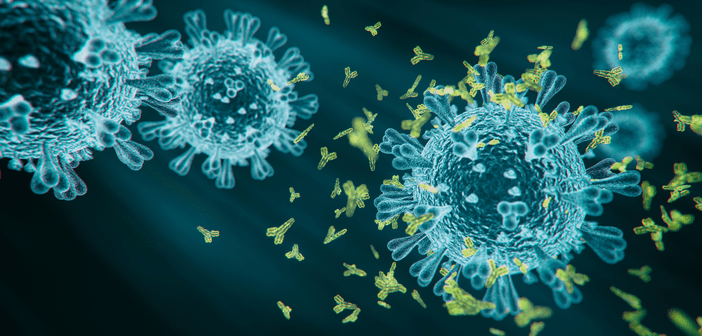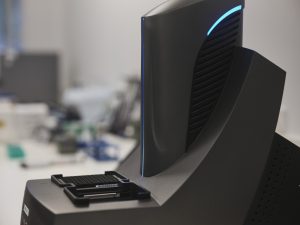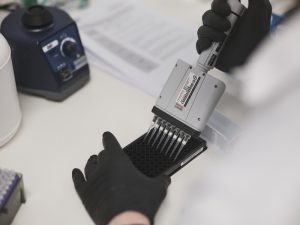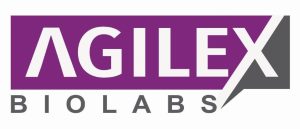Overcoming Drug & Target Tolerance Limitations in Immunogenicity Testing

Immunogenicity assays are required by regulatory agencies to determine whether your drug may elicit an unwanted immune response in human patients by producing anti-drug antibodies, or ADAs. Immunogenicity testing is crucial for evaluating safety and efficacy during preclinical and clinical phases of development.
When it comes to biologics in development, we’ve seen a diversification of modalities over the last decade – shifting away from the standard monoclonal antibodies (mAbs) to antibody-drug conjugates (ADCs), bispecific antibodies, therapeutic proteins and peptides, and cell and gene therapies. Such a wide variety of drug types begs a corresponding breadth of analytical approaches for detecting ADAs. Even in more standard biologics like mAbs, there is a growing need for multiple ADA detection method options and an experienced approach to troubleshooting. Challenges such as high drug tolerance and high target tolerance requirements can limit the effectiveness of standard approaches, creating issues with sensitivity or producing false positive or false negative results.
Drug tolerance denotes the maximum concentration of free drug that can be in a sample without inhibiting detection of ADAs. When the concentration of free drug exceeds drug tolerance, binding of free drug to ADAs can prevent binding to assay reagents. Target tolerance similarly describes the highest level of drug target that will not cause target interference, which can produce false positives or false negatives depending on whether the target is monomeric (1 binding site) or multimeric (>1 binding site).
To illustrate some of these challenges and the importance of a science-based approach, the Agilex bioanalytical team presents three case studies where standard approaches failed to address drug or target tolerance-related issues and alternative or modified methods were required to achieve success.

Case Study 1:
This study discusses Drug Z, a humanised mAb. The clinical study design involved a high dosing regimen, which meant there would be high levels of free drug in the blood, so the assay design needed to demonstrate a high level of drug tolerance. The target was also multimeric, which can create false positive results in a standard homogeneous bridging assay.
The Agilex Method Development team applied our platform screening approach, beginning with a stepwise bridging assay. They immediately noticed insufficient sensitivity and low drug tolerance, so tried an affinity capture elution (ACE), where they got good sensitivity but not enough drug tolerance; the precipitation and acid dissociation (PandA) assay format, which yielded low sensitivity; and lastly tried the solid phase extraction with acid dissociation (SPEAD) assay format. From the SPEAD approach they were able to achieve appropriate sensitivity and drug tolerance. However, the high concentration of free drug caused target interference, which produces false negative results when the free drug binds to ADAs and prevents them from binding to biotinylated drug. Having identified the right method, they then optimised the assay by introducing anti-target molecules to overcome drug interference to achieve the fit for purpose assay.
Case Study 2:
In this case study, Drug Y had a high target affinity. In the bridging assay, the team saw effects of both target interference and drug interference. They tried more complex formats – ACE, PandA, SPEAD, addition of anti-target antibody, polyethylene glycol (PEG) precipitation, and heat treatment to denature the drug target – but in each assay saw low sensitivity or insufficient removal of interference.
After testing a range of acids at different molarities and pHs, they found they could optimize the bridging assay – the simplest of the suite – with an HCl buffer solution and achieve optimal sensitivity while successfully avoiding interference. This case study illustrates that complexity is not always the best route forward, but that letting science lead you to modify simple solutions can sometimes achieve the best results.
Case Study 3:
The last case study describes another monoclonal antibody that required very high drug tolerance. After moving stepwise through the methods previously described, the team consistently observed very low signal-to-noise ratios when free drug was present.
The team settled on the PandA format to achieve better drug tolerance—douse the ADAs with free drug and then use PEG to separate the antibodies out of matrix. After a thorough literature review, they further optimised the PEG solutions to increase the precipitation yield of the drug-ADA complexes. This creative approach to assay optimization worked and the team was able to move into validation with a robust and reliable method.

You can access the full Technical Note, “Development of Highly Drug Tolerant and Target Tolerant Immunogenicity Assays,” describing the scientific details of these case studies or watch our panel discussion with the key scientists by visiting Agilix Biolabs’ homepage.
DOWNLOAD THE FULL TECH NOTE HERE
Working with the experienced, science-first team at Agilex Biolabs translates to confidence in your analytical data while saving money and time. With more than 60 years of combined experience with immunogenicity assays, the Agilex team will approach your project with diligence and flexibility to identify the perfect fit and can even hybridize multiple methods to ensure the most robust means of evaluating immunogenicity. Robustness is key to efficiency in bioanalysis because it allows smoother, faster validation (saving precious time) and reduces risk of repeats in sample analysis (cost savings).
As the world of drug development continues to expand and evolve, sponsors of new therapies need experts they can turn to for reliable support.
In association with:

